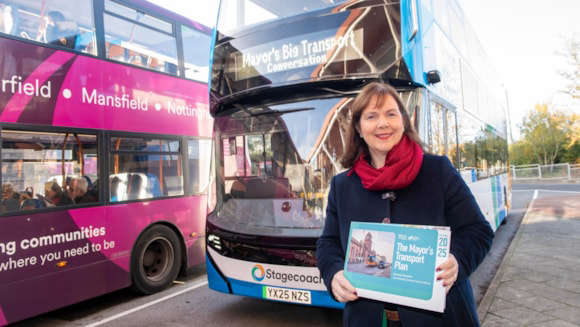
Recent figures show that Derbyshire County Council’s carbon emissions have reduced by 73% since 2009 and those for the whole county by 25% since 2005.
These figures have been welcomed but there are still challenges to be faced especially in face of budgetary pressures.
In October 2021, Derbyshire County Council approved a Climate Change Strategy. This included a target of the council reaching net zero carbon emissions by 2032, or sooner, and assisting the county as a whole to do so by 2050 which is in line with the UK Government’s national commitment.
At a meeting on Thursday 9th January 2025, Derbyshire County Council Cabinet members considered an annual report on progress in implementing the Climate Change Strategy. The report highlighted how the county council’s carbon emissions reduction of 73% so far covers emissions from streetlighting, council vehicle emissions, business travel and council buildings.
The LED lighting replacement in streetlighting is now 99% complete and a programme is in place to continue replacing ageing council vehicles with lower emission alternatives, including electric vehicles. There has also been a 12% reduction in mileage travelled by employees for business purposes between 2022-23 and 2023-24.
A 7% reduction in emissions was achieved between 2022-23 and 2023-24 but these reductions are slowing down.
Derbyshire County Council Leader and Cabinet Member for Strategic Leadership, Culture, Tourism and Climate Change Councillor Barry Lewis said: “We have been making good progress towards the targets in our Climate Change Strategy and are on track to deliver the majority of them within the timescales. But things are now getting tougher in light of budget pressures and the financial investment required for carbon-reduction measures as well as national concerns which are out of our direct control - like retrofitting homes and more use of public transport.
“To achieve our net zero target of 2032, or sooner, we will be increasingly looking to secure external funding, work in partnership and use our influence to bring about positive change.
“We’ll also be working with partners as part of the East Midlands Combined County Authority, for whom carbon reduction is a key area of work, to see how we can reduce our own and the county’s emissions further.”
The county council has introduced other important measures which are helping with climate change and improving sustainability. These include introducing mandatory climate change training for all employees, leading the development of a Local Nature Recovery Strategy for Derbyshire and woodland projects like the Million Trees and Heartwood Community Forest.
Looking at the broader picture emissions for the county as a whole have reduced by 25% since 2005. These include emissions from homes, commercial buildings, transport, industry, farming, waste management, and the public sector.
These county wide figures are mostly in line with national trends, apart from emissions from industry, which remain stubbornly high for Derbyshire.
This is largely due to Derbyshire’s heavy industry, including the Mineral Products Industry, which is very energy hungry in both its processes and transport and so is difficult to reduce emissions. The county council is working with the Mineral Products Industry, which is committed to reducing its environmental impact, to improve energy efficiency including the generation and use of renewable energy and more sustainable transport methods.
A new Climate Change Strategy for Derbyshire County Council for 2026 onwards is now being worked on. It will take into account budgetary challenges and the need for more partnership working and funding to enable the Council to have the greatest impact in combating climate change.
More details on Derbyshire County Council’s climate change work can be found here.

 Christmas gymnasts wow Mayor and Deputy
Christmas gymnasts wow Mayor and Deputy
 Free, practical advice to help customers make smarter energy choices
Free, practical advice to help customers make smarter energy choices
 Big Transport Conversation hits the halfway mark: Mayor Claire calls on all communities to have their say
Big Transport Conversation hits the halfway mark: Mayor Claire calls on all communities to have their say
 Cyclists to shed Christmas pounds by pounding up hill
Cyclists to shed Christmas pounds by pounding up hill
 Burglar who repeatedly targeted Ilkeston home jailed for more than four years
Burglar who repeatedly targeted Ilkeston home jailed for more than four years




